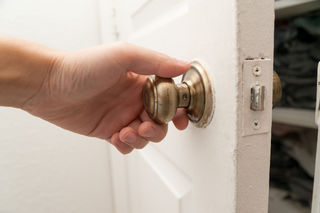Ask an employee what casual dress means today and you’ll likely get a long pause, or at least as many responses as you do people. It’s no wonder, because it’s tough for a company to drill down to specifics when the environment is changing; and there are so many grey areas of clothing attire.

When conservative Goldman Sachs Group recently made the headlining move of switching to casual attire, it simply told employees, “All of us know what is and is not appropriate for the workplace.” But still, many workers feel there are some lingering mysteries to be solved.
We know the trend is going more relaxed, but what does that really mean? More employers are following the lead of high-tech firms in ditching suits as required office wear, particularly as Millennials become more prevalent in the workforce and demand the change. In a survey last year by the Society for Human Resource Management, half of organizations reported allowing casual dress every day, up 6 percentage points from 2017 and 18 percentage points from 2014.
That’s great for workers’ budgets and allowing more personal expression through clothing, but it can also lead to a lot of confusion. It’s not always easy to decipher both the written policies and unspoken ones related to casual dress at the office. Here’s a quick primer:
Stick to basics. While there can be a lot of variation depending on industry and profession—for instance, almost anything may go at a start-up or small ad agency—and many companies with a less formal dress code have similar standards. Larger and more conservative firms expect women and men to choose slacks (or dress pants) and men to wear polo or button-down shirts; and women to opt for professional pullovers, blouses or shirts. Of course women typically add in a modest skirt or dress to the mix. Now, the most notable shift is the number of firms giving the nod to dressy jeans for casual dress, to compete for talent, especially in the current low unemployment environment.
Avoid beach attire. Generally, if you’d wear certain clothing to the beach, it’s out. Think shorts, athleisurewear, flip-flops, and hoodies. Low-cut or revealing tops and pants are considered inappropriate. Remember, the statement you want to make at work is “professional,” not “cool surfer” (unless you work at a surfing school or report to the beach).
Check the calendar. Casual day, every day policies can still have exceptions.
For instance, if you’re meeting with clients or the company president has flown in to visit your team, it’s a good idea to take your wardrobe choices up at least a notch (e.g., instead of wearing khakis with a polo, you might opt for khakis with a button-down shirt and blazer). Some situations may require you to dust off your interviewing suit and go formal again. You can’t go wrong exceeding expectations for an event or activity. No one can really criticize professionalism.
Dressing up can also boost your confidence in critical business meetings. A study conducted by Yale University had 128 men participate in mock negotiations wearing suits; sweatpants, T-shirt and sandals; or their own clothing. The suit-wearing participants behaved more dominantly and were more successful in the negotiation, conceding fewer than $1 million from their initial offer, less than half of what others wearing ultra-casual or their own neutral clothing conceded.
Look around. You can always take your cue from those around you, ideally those who are the best performers in the office. This is not a good place to start a crazy new fad or to make a loud statement, especially literally, with a shirt the let's everyone know how you "really feel."
Ask your manager. Thinking of donning that classic Metallica T-shirt tomorrow? Unless you’ve seen others successfully wear similar attire or it’s Wear Your Favorite Metal Band Shirt Day, it’s always a smart move to ask first if you’re unsure.
Dress a step up. There’s an old saying to dress for the job you want, not the one you have, and it has a lot of merit. What are those working in the role a level above yours wearing? That’s your target dress code. If you want to be seen as a candidate for a promotion to a higher role, you need to look the part, and that may require upping your game with your wardrobe. In a survey by OfficeTeam, the majority of managers polled (80 percent) said clothing choices can affect someone’s chances of being promoted.
Do denim the right way. Ripped jeans may be in style right now, but that doesn’t mean they’re appropriate for the office. Same goes for those well-worn, loose-fitting jeans that are oh-so-comfortable. Your safest bet when you’re able to wear denim is to stick to newer, darker colored, rip-free jeans.
Add personality. Casual doesn’t have to mean sloppy or boring, either. A stylish belt, colorful scarf, jewelry and even some fashionable socks can add flair to a more relaxed wardrobe. Accessories can be a smart investment, too, helping you get more mileage out of your work clothes, and allowing you to change up your look with small changes.
Pay attention to quality. Don’t forget to do a periodic check of your wardrobe. Look out for issues like pilled sweaters, shoes in need of repair or replacement, stains and fading. It won’t matter how great your outfit is overall if there are reminders of last week’s potluck on your sleeve!
You no doubt dressed to impress when you interviewed for your job. Remember to keep your positive personal brand intact on a continuous basis. Your wardrobe is a relatively easy way to demonstrate you take your career seriously … even when going casual.




